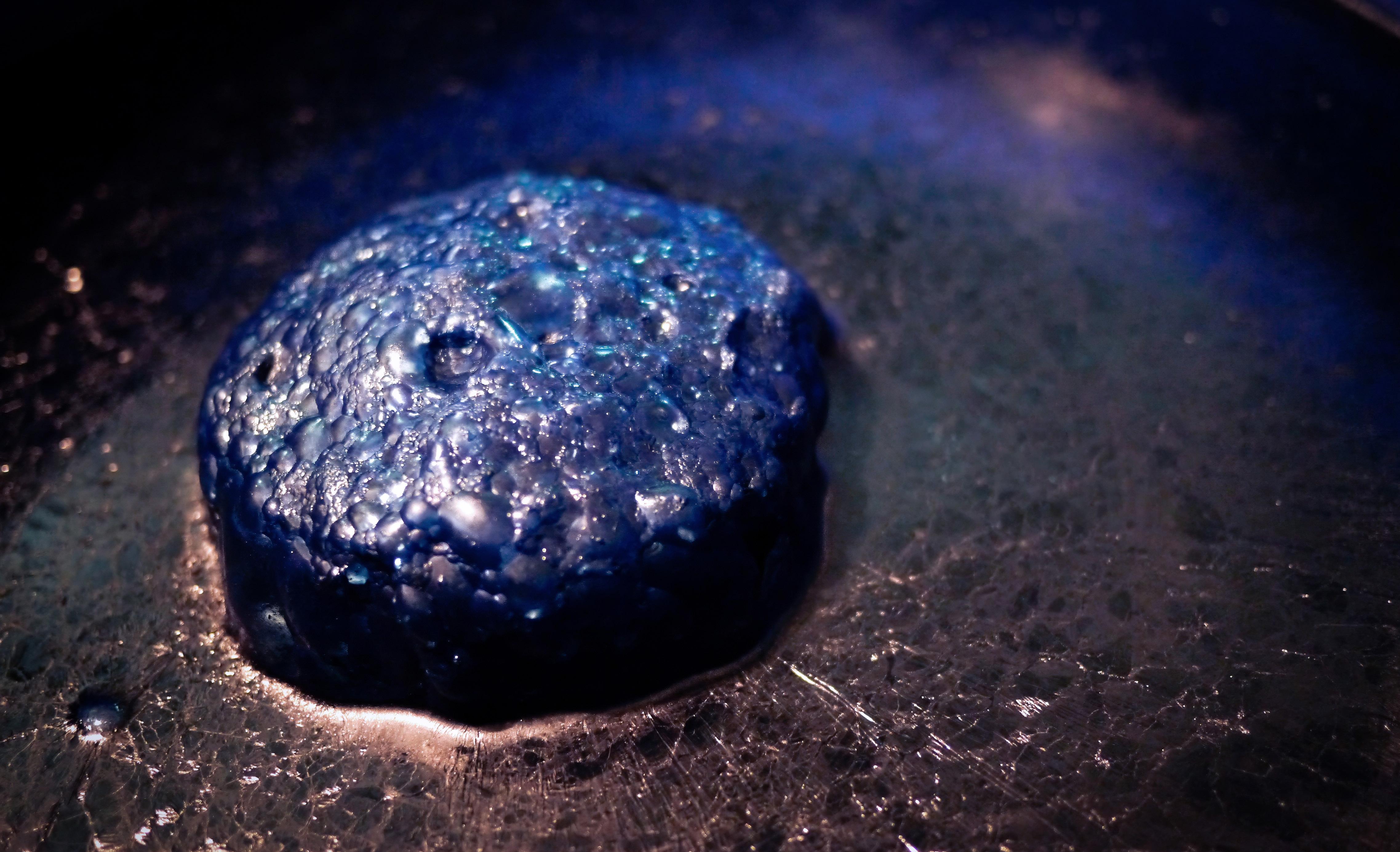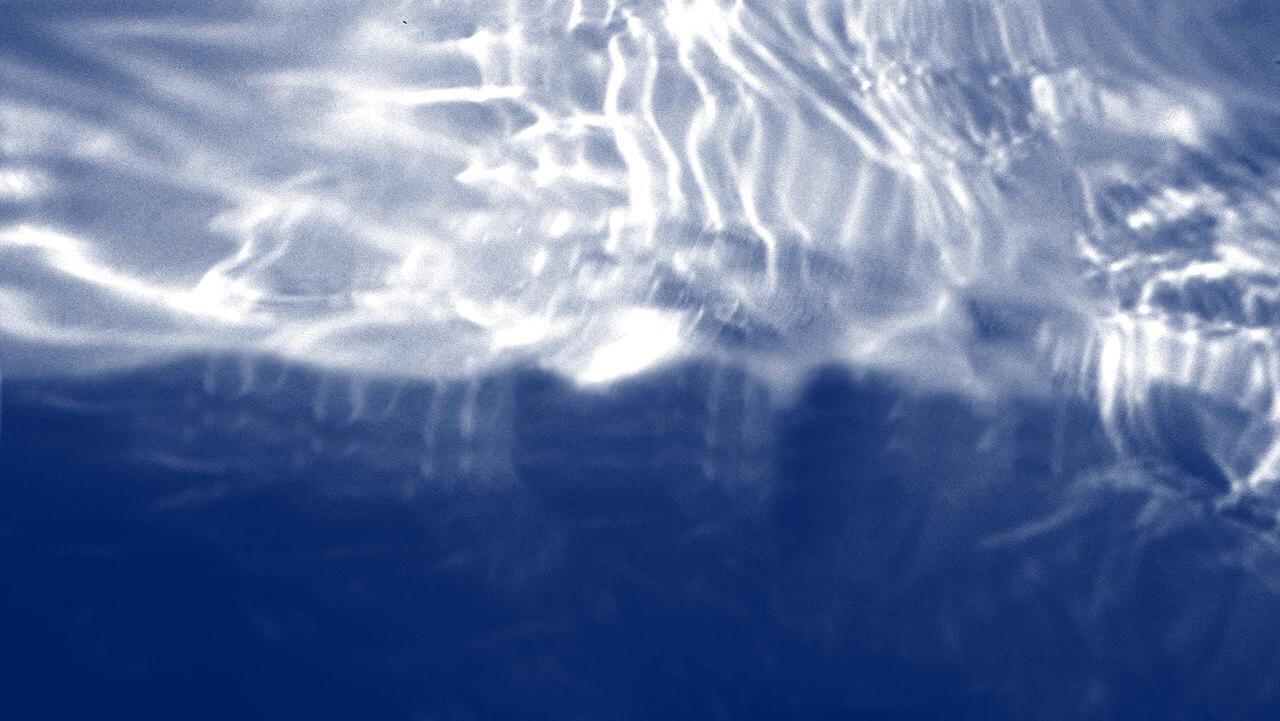INDIGO DYEING
An Indigo Council Study
AUTHOR: ALDEN WICKER | DESIGN: SADIA RAFIQUE
INDIGO DYEING INDIGO DYEING
CHAPTER ONE: ABOUT INDIGO The History of Indigo The Indigo Dyeing Process Rope Dyeing Versus Slasher Dyeing
CHAPTER TWO: AN INDIGO COUNCIL STUDY
Constant and Variable Parameters Data Collection and Analysis Results
CHAPTER THREE: TAKE-AWAYS
The New Industry Reference Summary of Key Findings and Insights
EXECUTIVE SUMMARY
makes an indigo dyeing process “sustainable?”
2. 3. What is the average amount of water used to dye denim today?
And what would qualify as a laudably low amount of water, or an excessive amount of water that indicates a mill needs to update its equipment and processes?
The answers to these seemingly basic questions — given in marketing campaigns, sustainability reports, and pitch decks — have varied widely and been based on outdated and incorrect information , opening the door to greenwashing by fashion companies, equipment manufacturers, dye startups, and denim mills.
In short, mills currently can say whatever they want to brands about water savings, because there is no way to verify those claims or a benchmark to compare them to.
The Transformers Foundation, the denim supply chain platform and think tank for ethics and sustainable innovation in the jeans industry, believes there should be a universal benchmark by which to measure sustainability in denim production.
2023
So in August of 2023, we started discussing this idea with mills…
…and in February 2024 we formed the Indigo Council to study the issue and establish industry standards.
Indigo dyeing is a long and complicated process…
F or the first study in what could be a series we looked at water usage in the indigo dye process.
Our task wasn’t easy. Indigo dyeing is a long and complicated process that involves both chemical and physical reactions, and is influenced by the quality and type of raw materials, production methods, and environmental factors such as weather, humidity, water quality, and more.
These factors can vary not only from country to country or region to region but from mill to mill, and even day to day within that same mill.
Moreover, indigo dyeing is deeply rooted in tradition and craftsmanship, with recipes,
conditions, and practices varying across cultures and regions. Add in the ever-changing expectations and trends of consumers, and you see that there is no one-size-fits-all approach to indigo dyeing.
See diagram below.
Indigo Dyeing is Deeply Rooted in:
Tradition and Craftsmanship
These Factors can impact Indigo Dyeing:
Country to Country
The Environment can impact Indigo Dyeing:
Weather
Recipes
Region to Region
Mill to Mill
Conditions
Practices Varying
Across Cultures and Regions
Humidity
Indigo Dyeing is influenced by the quality and type of:
Raw Materials
Production Methods
Environmental Factors
Water Quality And More
Day to Day
Chemical
Physical
Chemical &
Reaction
Indigo Dyeing
Consumer Trends
“There is no one-sizefits-all approach to indigo dyeing”
Our research is an attempt to address this complexity and create an adaptable yet sturdy open-source methodology that can adjust to the many conditions and practices inherent in indigo dyeing.
The primary objective of this pioneering study was to define, establish, and validate a reference standard for conventional or standard dyeing of denim warps. We hope that it serves as an industry benchmark against which claims regarding water consumption for new coloring processes or technologies can be compared.
Without further ado, our results are as follows:
The initial water consumption for the pre-dyeing is almost the same for all the mills in our study. Variability is in the water used in the post dyeing boxes for rinsing and washing.
The average quantity of water used for washing and rinsing ranged from 15 to 20 L/kg for rope dyeing and 10 to 15 L/kg for slasher dyeing. Implementing best practices may
decrease this amount to as low as 3.85 L/kg for rope dyeing and 3.40 L/kg for slasher dyeing.
Indigo efficiency - meaning the percentage of fed indigo remaining on the yarn at the end of the dyeing process - for rope dyeing should be between 93% to 95%, while for slasher dying it should be between 85% to 94%.
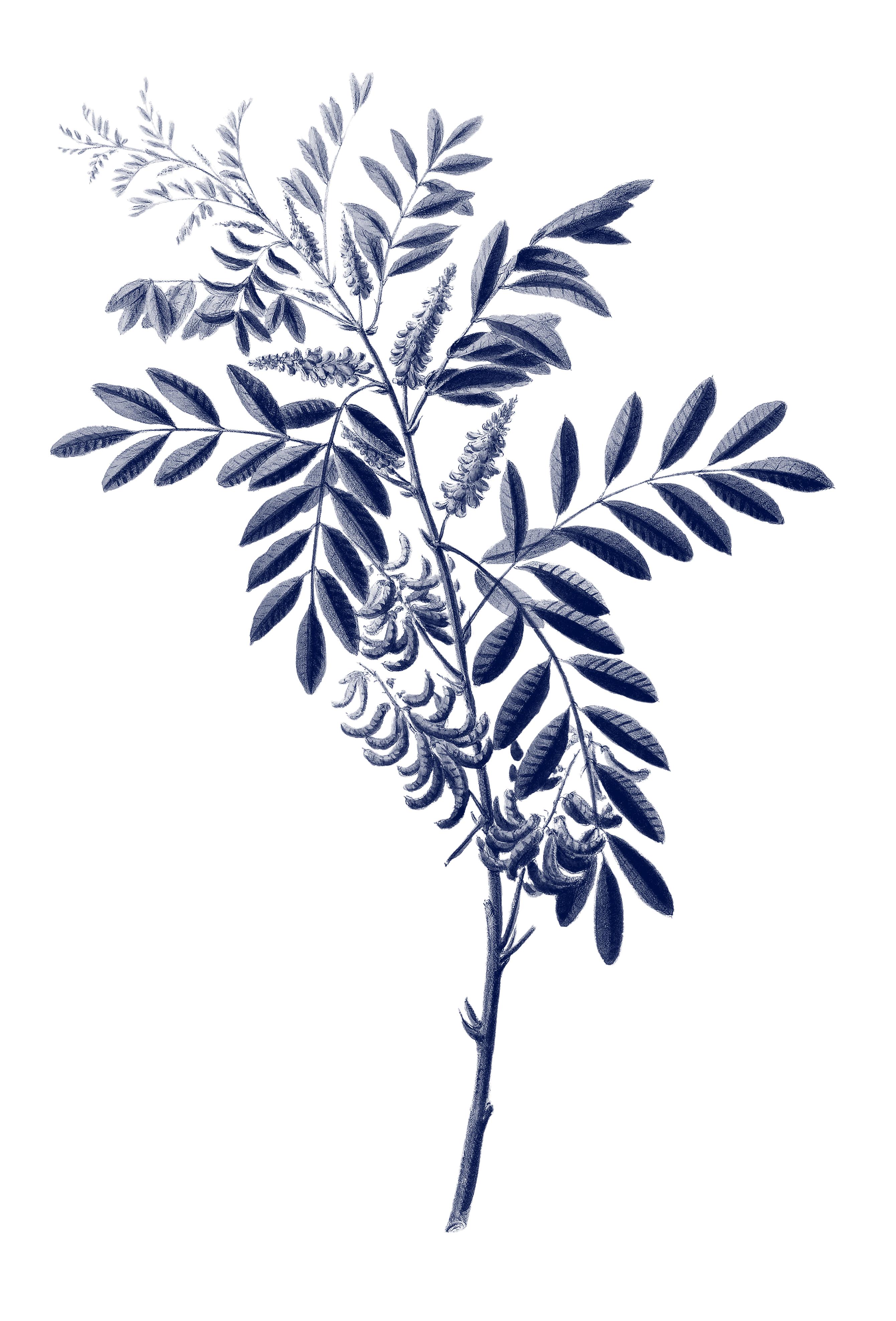
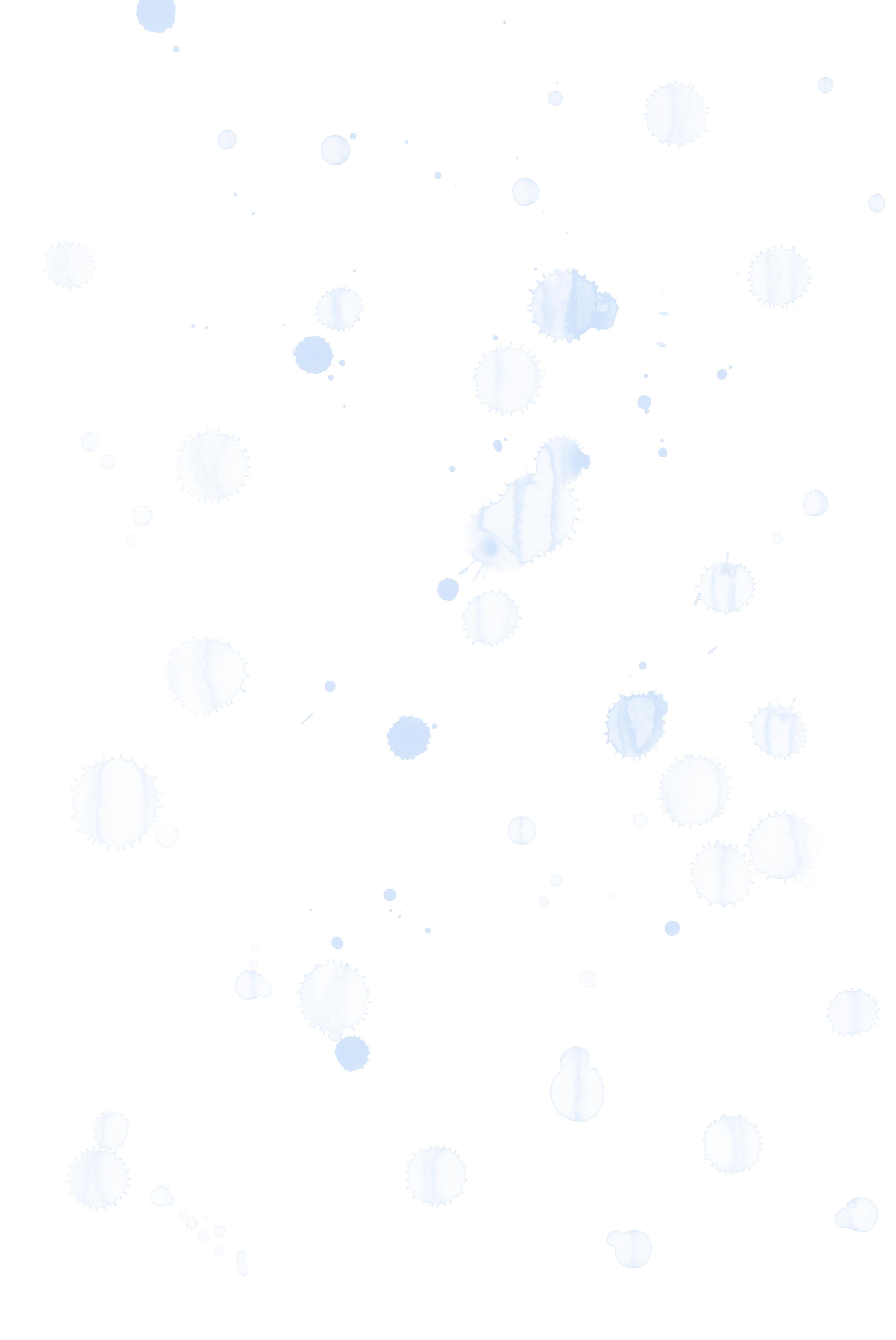
EXECUTIVE SUMMARY
Visualising our results…
The initial water consumption for the predyeing is almost the same for all the mills in our study.
The average quantity of water used for washing and rinsing
Implementing best practices may decrease to this amount
INDIGO EFFICIENCY
The percentage of fed indigo remaining on the yarn at the end of the dyeing process
INTRO DUCTION
anestimated 66,000 TONS ofindigopowderwasusedlastyear Expertsestimatesomewherebetween 3to5 billion denimgarmentsaremanufactured eachyear in 2015, the global fashion industry consumed 78 billion cubic meters of water
According to a report by the Global Fashion Agenda , in 2015, the global fashion industry consumed 79 billion cubic meters of water. Concerns about fashion contributing to the burgeoning water scarcity crisis incentivized the Science Based Target Network in January 2024 to release a corporate water stewardship program.1 However, there’s no good estimate of the amount of water that the denim industry uses, despite being frequently called out for its water and chemical usage.
Concrete numbers are hard to come by, but denim industry experts estimate somewhere between 3 to 5 billion denim garments are manufactured each year, much of it in water-scarce regions. This level of production requires an estimated 66,000 tons of indigo powder, 2 which is combined with (sometimes hazardous) chemicals, to make it soluble into water and made a liquid dye.
Many denim suppliers have been proactive and have implemented machinery and processes that
reduce the amount of water and chemicals they require. They’ve sought out new dye methods and eco-friendly chemical and dye formulations to reduce denim’s environmental footprint.
With innovation comes marketing claims, especially about substantial water savings. But these figures rarely acknowledge the complexity and diversity of indigo dyeing processes and the many parameters that influence water usage.
Brands and suppliers can’t evaluate the validity of watersaving claims, designers can’t make well-informed decisions, and brands can’t effectively communicate environmental initiatives to consumers.
At least one marketing campaign from around 2020 (which has since been taken down) claimed that the standard washing process alone wasted about 1,500 liters of water for each pair of jeans. Anecdotally, that 1,500-liters number comes
INTRODUCTION
from old belly washers, which are no longer considered “standard” except in low-quality, old dye houses.
To be clear, the denim washing process does use more water than the indigo dyeing process. It is also outside the scope of this study on indigo dyeing. But this demonstrates how slow the facts are to catch up with the lore when it comes to denim and water.
Prior to this study, there was no all-encompassing method for gathering and comparing data on the various chemicals, machines, and other factors involved in the indigo dyeing process, preventing the industry from precisely measuring and comparing water usage across dyeing recipes and procedures.
Brands and suppliers can’t evaluate the validity of water-saving claims, designers can’t make wellinformed decisions, and brands can’t effectively communicate environmental initiatives to consumers.
And without a benchmark, even mills’ best-intentioned efforts can be perceived as greenwashing, which is becoming not just a reputational risk, but a liability for brands and companies as well.
In 2024, the European Parliament voted overwhelmingly to pass the Green Claims Directive, which bans misleading environmental
The United Kingdom’s Green Claims Code also went into effect in 2024 and prevents UK financial firms from making misleading claims while offering guidance for businesses making environmental claims. In the United States, several fashion brands have been sued for making misleading environmental claims about their products to shoppers.4-5
…without a benchmark, even mills’ best-intentioned efforts can be perceived as greenwashing, which is becoming not just a reputational risk, but a liability for brands and companies as well.
claims on products and advocates for improved labeling to help consumers make better purchasing choices. Terms like “environmentally friendly,” “biodegradable,” and “climate neutral” can no longer be used in advertising or on packaging without concrete evidence. Member states now have two years to introduce the new rules.3
In this climate, it’s important that claims about sustainable denim manufacture are backed up with scientific standards.
TALLYENVIRONMENFRIENDLY BIODEGRADABLE!
GREENWASHING!
GLOS SARY
AUXILIARY CHEMICALS
Substances that are used in the dyeing process, but are not incorporated into or left on the final denim product.
BALL WARPING
Yarn ends are pulled from the creel, pass through a comb-like device (a hack or reed), then go through a funnel-shaped device called a trumpet, which condenses the sheet of yarn into rope form, which is finally wound onto a log.
BEAM WARPING
Maintains the yarns in an open sheet form and winds the yarns parallel to each other onto a flanged beam.
CAUSTIC SODA
The chemical compound sodium hydroxide (NaOH). Because it is alkaline, it neutralizes acids and is soluble in water. It is used to scour cotton before dyeing and it is also a component of the indigo dyeing bath.
COUNTERFLOW WASH SYSTEM
In the yarn washing process after dyeing, clean water is added to the third, or final, washing box. That overflows into the second wash box, which overflows into the first wash box.
CROCKING
When color rubs off from the textile surface, staining the wearer’s skin or other materials it touches.
DE-SIZING
Taking the protective coating off the yarn (which is added after dyeing and before weaving).
DIP
Each time the yarn passes into the dye.
ENDS
A single yarn in the warp direction.
EFFICIENCY
The percentage difference between the amount of indigo fed into the dye process at the beginning and the amount that remains on the yarn at the end.
INDICAN
An indigo-forming substance.
INDIGO
A blue vat dye (technically a pigment) obtained from indigo plants or manufactured from a combination of organic chemicals.
INDIGO RATIO (INDIGO PICK UP)
Represents the content of indigo on the yarn versus the weight of the yarn. A 4% indigo ratio means 4 g of indigo on 100 g of yarn. Lighter shades tend to have a 1.5% indigo ratio, while mid shades have a 2.5% indigo ratio.
LEUCO INDIGO
Indigo that has been converted into water soluble form.
NE 9 YARN
A common warp yarn count used in denim and the one specified in the study.
OXIDATION A.K.A. SKYING
After being dipped in an indigo vat, the threads are exposed to air and turn blue.
PIGMENT
A powder used to add color to a material such as cotton. Pigments are completely or nearly insoluble and chemically unreactive in water or another medium.
POWDER INDIGO
Traditional indigo pigment arrives to the factory in powder form, and must be reduced, or made water soluble.
GLOSSARY
PRE-REDUCED INDIGO (PRI)
Has been reduced by the dyestuff manufacturer and arrives at the mill ready-to-use in liquid form. PRI is popular because it is safer and easier to use and more beneficial to the environment and workers.
RE-BEAMING
Threads are unbundled from the rope and wrapped around a cylinder in sheet form.
REDUCING AGENT
Chemicals such as sodium hydrosulfite and sodium hydroxide that convert the indigo dye to its soluble form.
RING DYEING
Unlike almost all other popular dyestuffs, indigo dye sticks to the outside of the yarn instead of penetrating, producing a ring of color around a white core in the cotton yarn.
RING-SPUN YARN
Yarn that has been produced with a ring frame. This is derived from the oldest spinning methods, where parallel fibers are kept together thanks to the yarn twist.
ROPE DYEING
Separate yarn ends are collected into bundles to make a rope, which is dyed.
SCOURING
To ensure uniform wetting and dyeing of the fibers, yarns are fed into scouring baths, which contain wetting agents, detergents, and caustic soda. This removes naturally occurring impurities found on the cotton fiber.
SIZING (ALSO KNOWN AS SLASHING)
Encapsulating the yarn with a protective coating to prepare it for weaving.
SKYING - A.K.A. OXIDATION
After being dipped in an indigo vat, the threads are exposed to air and turn blue.
SLASHER CREEL
Steel structure where the warp beams are placed to be unwound to feed the slasher dye machine.
SLASHER DYEING
A big sheet of yarn ends are dipped into the baths in the form of sheets.
SLASHER SET
How units of denim production are measured. In ball or beam warping, the yarn wound-up from one warper set produces one slasher set. In rope dyeing, two or three slasher sets can be dyed at a time.
SOLIDITY
The bonding process where the dye is attached to the yarn. This measures the durability of the dye on the yarn, a.k.a its colorfastness.
SOLUBLE
Able to be dissolved, especially in water.
WARP YARNS
In cloth weaving, warp and weft are the two basic components of a textile. The vertical warp yarns are held stationary in tension on a loom while the horizontal weft is drawn through the warp thread. In denim, the warp is indigo dyed, while the weft is left undyed.
WEAVER’S BEAM
A cylinder on which the yarns are wrapped around in preparation for weaving.
YARN TWIST
How tightly the yarn is twisted, which affects the dye uptake. The optimal twist ratio for this study is between 4.0 and 4.8.
CHAPTER ONE
CHAPTER ONE: About Indigo
The History of Indigo The Indigo Dyeing Process Rope Dyeing Versus Slasher Dyeing
CHAPTER ONE: ABOUT INDIGO
History of Indigo Dyeing
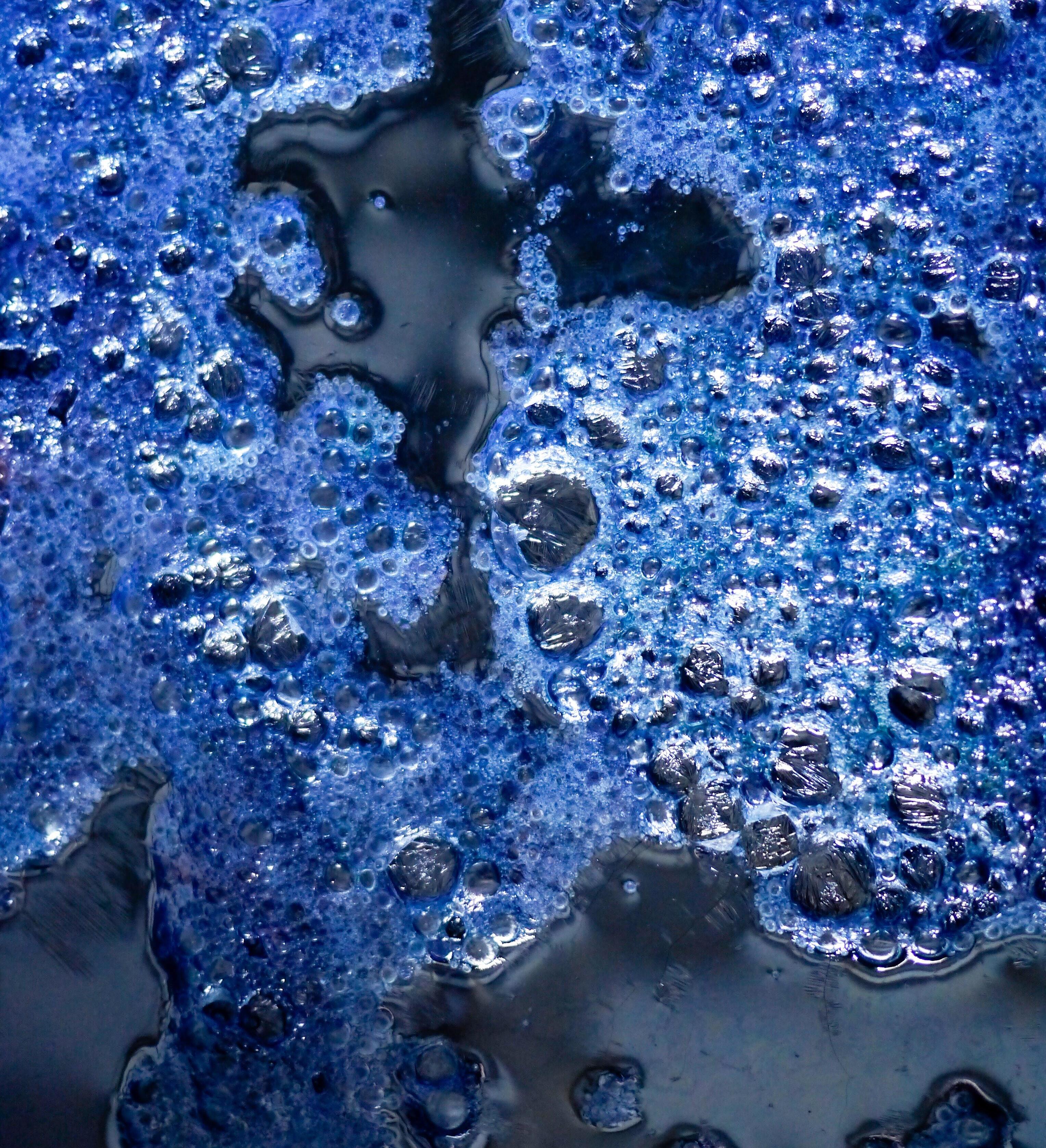
There’s evidence of plant indigo-dyed fabrics going back more than 6,000 years 6. Indican, the chemical source of indigo dye, is the same no matter whether it comes from indigofera in India, Africa or Central America; woad in Europe; or polygonum tinctorium in Japan.7
Compared to other dyes, indigo is exceedingly complex in chemistry and application. It can take up to two weeks and a lot of labor to prepare and ferment a finicky vat of natural indigo dye. While many early Levi’s garments were made from brown duck canvas, natural indigo was used in the production of Levi’s waist overalls.
The invention of synthetic indigo at the end of the 19th century by a German chemist — shortly after Levi’s Strauss and Jacob Davis patented the rivet — eased this process. As early as 1922, Cone Denim was using synthetic indigo to produce denim for Levi’s.8 Chemically, synthetic indigo is the exact same as plant indigo, so much so that until recently,
when a test was developed to identify whether the carbon in a material comes from fossil fuels, chemists were unable to distinguish the two.9
Natural indigo is generally less concentrated than synthetic indigo, but the dyeing process for both is the same, with the same machinery and auxiliary chemicals.10
The dye that gives denim its distinctive blue shade, fading, and wear effects is extremely challenging to use. Indigo (natural and synthetic) is a pigment instead of a dye. It’s not water soluble and is without affinity for cellulosic fibers.
To make it soluble, a reducing agent (sodium hydrosulphite in modern times) has to be added.
“It breaks the molecule of indigo in a way that it has a little bit of solubility. And it has a little bit of affinity for the cellulosic fiber, not much but a little bit,” the late Miguel Sanchez, a textile chemistry expert, told Kingpins in 2021.
“The dye is very lazy. You cannot put a lot of indigo in one go on the yarn. You have to apply it like you’re painting, one by one, layer by layer.” 11
When indigo dye is in its pure, reduced form, it appears greenish-yellow. The dye process requires multiple submersions in a dye bath followed by exposure to air, creating indigo’s blue shade. This deposits microscopic particles directly on the surface of textiles and threads, whereas normal dyes soak completely through the threads.
This layering, also called “ring dyeing,” is why with heavy use (or distressing done at the factory), indigo rubs off of denim and exposes the white of the underlying cotton.
INDIGO DYEING PROCESS:
The key indicators in the indigo denim dyeing process that influence water consumption and quality — and are crucial to understanding the indigo dyeing process — are:
SOLIDITY
“Solidity”, which refers to the bonding process where the dye is attached to the yarn, measures the durability of the dye on the yarn, or the colorfastness. In this process, there is a tight interplay between solidity, water usage, and indigo dye waste.
"You have to use more or less water depending on the solidity that you can acquire in indigo dye boxes— depending on the quantity of dye boxes, sky oxidation, temperature, shade, etc,” says Karl Mayer’s Stefano Agazzi. There is a limit on the quantity of indigo you can apply to yarn — above that, and it won’t fix to the yarn.
EFFICIENCY
Efficiency is the percentage difference between the amount of indigo fed into the dye machine during the process and the amount that remains on the yarn at the end (after washing and drying). Higher is better, and 100% would represent perfection, though in reality it is difficult to achieve more than 94% efficiency. Parameters that affect the solidity — number of dips, oxidation length, running speed — also affect the dye efficiency.
There are three main steps in indigo dyeing, whether using the rope or slasher method: preparing the yarn for dye, dyeing, and washing.
PREPARING THE YARN FOR DYE
DYEING
Cotton warp yarns must undergo a pre-treatment before dyeing that scours and neutralizes any impurities on the surface of the yarn, such as dirt, minerals, ash, pectin, and wax. The most common process uses caustic soda, which is called scouring. Wax and caustic soda combine to create soap, which is removed from the cotton by washing or rinsing with water, usually in one or more wash boxes, depending on machine configuration. This is the first significant use of fresh or clean water.
The first wash box after caustification is the dirtiest because most waxes and impurities are removed from yarns at this stage, while proceeding, in case of more boxes, they become cleaner and cleaner.
In order to use less water, mills use a counterflow system. Clean, fresh water is added to the third, or final, washing box. That overflows into the second wash box, which overflows into the first wash box.
CHAPTER ONE: ABOUT INDIGO The
Indigo shades are built up by dipping the cotton yarns into the dye baths between five and ten times. The more dips, the darker the blue gets. After each dip, the excess liquid is squeezed out to let the yarns rest and oxidize — be exposed to air and turn blue — before they get dipped inside the next bath.
Each dip results in the yarn collecting more dyestuff and depositing another fine layer of indigo on the surface of the yarn, leaving the core white. As the dyestuff gradually rubs off, the white core of the yarn becomes visible, enabling denim’s traditional faded and worn look.
Once an indigo dye mixture is made, it can be utilized indefinitely, less the amount that was used, lost, or evaporated. All the mills in our study store leftover indigo dye to reuse later.
Indigo Dyeing Process
WASHING
During the dye process, not all dyestuff is fixed to the yarn, so after the last dyeing box, there is some excess dye that needs to be washed off, lest it rub off the denim later. So the yarn is cleaned or rinsed one more time, using, in general, three or four wash boxes.
ROPE DYEING VERSUS SLASHER DYEING
For this study, we excluded the less common indigo dye technique of loop dyeing, the artisanal technique of Japanese slow dyeing, as well as newer dye processes such as foam dyeing and air dyeing, and focused on the two most commonly used techniques: rope dyeing and slasher dyeing.
The aim of this study is not to champion one process over another. Rope dyeing and slasher dyeing have different uses, advantages, and disadvantages, and many mills, including some in our study, utilize both processes in their operations.
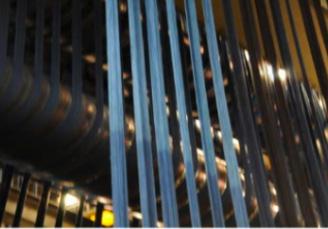
ROPE DYEING
Separate ends are collected into bundles to make a rope before dyeing. Unlike a slasher machine, which dyes one set at once, a rope dyeing machine can dye up to 5 sets at once, based on its design.
Depending on the shade of color wanted, the ropes are immersed from 4 to 12 times in the dye bath containing leuco indigo (indigo that has been chemically reduced to be soluble in water) for a duration up to 20 seconds. In between each immersion, it is exposed to air for oxidation for 75 to 100 seconds.
CHAPTER ONE: ABOUT INDIGO
Rope Dyeing Versus Slasher Dyeing
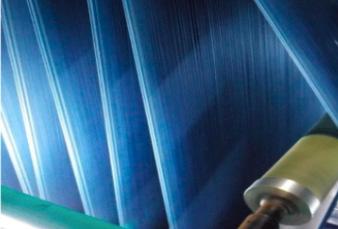
SLASHER DYEING
In slasher dying, one warp set — comprising a sheet of yarns wrapped flat in one layer around the entire width of a cylinder, known as a beam — is dipped into the baths. The total number of ends required for a weaver’s beam (the beam they’re wrapped around) are dyed, sized (coated in preparation for weaving), and dried simultaneously. The sheet of yarn ends moves through multi-dip indigo dyeing, with an immersion time ranging from 5 to 22 seconds to achieve varying shades (depending on machine design and construction period). Oxidation then occurs over a minimum of 60 seconds.
ROPE DYEING
CHAPTER ONE: ABOUT INDIGO
The main difference between these two systems is the sequence of steps between yarn manufacturing and weaving.
SLASHER DYEING
ROPE DYEING
Rope dyeing requires four steps: ball warping (the threads are wound in rope form around a cylinder), rope dyeing, re-beaming (the threads are unbundled from the rope and wrapped around a cylinder in sheet form), and slashing (a.k.a. Sizing), the threads are coated in preparation for weaving).
Re-beaming to put the yarn onto section beams for loading into the slasher creel is an extra step compared to slasher dyeing.
The main difference between these two systems is the sequence of steps between yarn manufacturing and weaving.
SLASHER DYEING
Slasher dyeing involves two discrete steps: beam warping and slasher dyeing. In-fact the typical slasher dyeing machine is composed by a dyeing section directly connected with the sizing one, the dyeing and sizing processes concepts remaining the same like in the rope dyeing.
Which to Use: Rope or Slasher Dyeing?
question“Thisisathat nevergetsold inthedenim world”
CHAPTER ONE: ABOUT INDIGO
Rope Dyeing Versus Slasher Dyeing
WHICH TO USE: ROPE OR SLASHER DYEING?
“This is a question that never gets old in the denim world and there is no single correct answer,” says Suat Ozdemir, manager of textile dyeing for Crescent Bahuman Ltd.
Rope dyeing machines, introduced in 1915, were historically preferred by denim factories, especially those manufacturing for the workwear market. They have remained basically the same over the years.
Slasher machines were introduced in 1970 in response to the evolving demands for flexibility from the denim market — this dyeing method requires less floor space and capital investment, enabling smaller production runs. With a focus on keeping costs down and flexibility, slasher machines have been innovated on many times. Since the 1990s, dipping lengths have increased from 2.5 to 11.2 meters.
With technological improvements, many claims about slasher dyeing are now outdated. For example, consistency across the sheet used to be an issue with slasher dyeing, but
improvements in the machinery and the process have largely resolved these issues.
Rope dyeing is still the predominant method in the industry, especially since many manufacturers bring years of experience and skill to rope dyeing and find it less risky. Other manufacturers see slasher dyeing as more flexible and practical. (To see more details on how mills think about the choice of investing in rope or slasher dyeing machinery, see Appendix I.)
Despite all these apparent differences, you cannot detect visually a difference between rope-dyed and slasher-dyed denim.
One key difference between the two dye methods — and the focus of our study — is water usage. Although it’s impossible to estimate the exact difference, due to different machines used, experts believe rope dyeing uses roughly 30% more water than slasher dyeing due to the need to clean the ropes thoroughly.
We conducted this study, keen to understand where the truth is..
Benefits Comparison
CHAPTER ONE: ABOUT INDIGO
Rope Dyeing Versus Slasher Dyeing
ROPE DYEING
High productivity: Suitable for mass production.
Lower wastage: Less wastage compared to slasher dyeing.
FEATURE/BENEFIT ROPE DYEING (1915) SLASHER DYEING (1970)
Productivity
Wastage
Cost:
Readiness
High productivity is suitable for big volumes
Low to zero wastage at lot change
Higher production costs due to more separate process steps
Longer process due to more separate process steps
Fine yarn handling
Color flexibility
More difficult and risky for quality, reduced productivity
Limited suitability for frequent color changes
Integrated process saves time, labor and energy
Higher wastage at lot change
Lower production costs thanks to integrated process
Warp immediately ready for weaving after one step-process dyeing-sizing
Better suited for fine and delicate yarns
Easier to handle greater variety in colors
SLASHER DYEING
Efficiency: Integrated dyeing and sizing saves time, labor, and energy.
Cost: Generally lower production costs.
Immediate use: Warp ready for weaving immediately after dyeing.
Fine yarn handling: Better suited for fine and delicate yarns.
Color variety: Greater variety in colors.
CHAPTER TWO
CHAPTER TWO: An Indigo Council Study
Constant and Variable Parameters
Data collection and Analysis
Results & Data Analysis
WHO CONTRIBUTED?
Real-time data collection for this study was supported by seven mills:
CHAPTER TWO: INDIGO COUNCIL STUDY
This ambitious research endeavor was executed through consultation with denim mills globally and overseen by dedicated researchers tasked with data collection and compilation. Our approach combined both quantitative and qualitative methods to provide a comprehensive understanding of water use in indigo dyeing. By combining data from multiple sources — interviews, desk research, factory visits — the study provides a nuanced perspective on water consumption in indigo denim dyeing.
CHAPTER TWO: INDIGO COUNCIL STUDY
Constant and Variable Parameters
Two machinery companies provided technical expertise for this study:
MACHINERY CO.
Textile Machinery Co., a family-owned machinery business headquartered in Fort Lawn, S.C. that manufactures equipment for the textile, non-wovens, and paper industries.
was provided by:
KARL MAYER Karl Mayer, a German family-owned machinery company which produces machinery for the textile market, including both rope dye and slasher dye ranges.
Independent oversight was provided by bluesign, the certification system for sustainable textile production, and dyestuff manufacturer Dystar.
CHAPTER TWO: INDIGO COUNCIL STUDY
This ambitious research endeavor was executed through consultation with denim mills globally and overseen by dedicated researchers tasked with data collection and compilation. Our approach combined both quantitative and qualitative methods to provide a comprehensive understanding of water use in indigo dyeing. By combining data from multiple sources — interviews, desk research, factory visits — the study provides a nuanced perspective on water consumption in indigo denim dyeing.
This study is only concerned with what happens during the indigo dyeing process and excludes sizing, weaving, and other finishing processes. Wastewater treatment, chemical usage, and water recycling are possible topics for future studies.
This study focuses on two main areas: machinery and indigo chemistry.
• For machinery, benchmarks were established for basic fabric construction, shade, depth, and ring effect, with specific machinery types — rope dye and slasher dye — identified for comparison.
• For indigo chemistry, the study concentrated on liquid indigo applications and aimed to define benchmarks for fabric shades and dye application methods.
CHAPTER TWO: INDIGO COUNCIL STUDY
Constant and Variable Parameters
THE STUDY CONSISTED OF TWO PHASES:
1. DATA COLLECTION:
• Conduct interviews with denim mills globally to gather information on dyeing processes, machinery, and water consumption practices.
• Utilize desk research to gather additional data on indigo dyeing techniques and technologies.
• Collect data on fabric construction, shade, depth, and ring effect, along with details on machinery used.
• Gather information on indigo chemistry, focusing on liquid indigo application methods.
2. DATA ANALYSIS:
• Analyze collected data to establish benchmarks for water consumption in indigo dyeing processes.
• Compare water usage across different dyeing machinery and methods.
• Identify influencing parameters that affect water consumption and determine their significance.
CHAPTER TWO: INDIGO COUNCIL STUDY
Constant and Variable Parameters
CONSTANT AND VARIABLE PARAMETERS
CONSTANTS: VARIABLES:
ROPE DYEING & SLASHER DYEING WATER CONSUMPTION (L/KG) (ALSO THE FINAL OUTCOME OF THE STUDY)
100% COTTON WARP
MEASURING AND COMPARING WATER USAGE IN THE INDIGO DYEING PROCESS IS A TRICKY TASK. ALTERING A SINGLE PARAMETER CAN AFFECT THE ENTIRE DYEING AND WASHING PROCESS FOR DENIM AND MOST OTHER TEXTILES, AND TECHNOLOGIES AND RECIPES CAN VARY FROM MILL-TO-MILL. WE THEREFORE CHOSE TO FIX CERTAIN PARAMETERS TO CREATE A LIKE-FOR-LIKE EVALUATION OF WATER USAGE ACROSS MILLS.
TOTAL NUMBER OF ENDS
RING SPUN ~ NE 9 YARN SPEED (METER/MIN)
100% PURE INDIGO
LIQUID INDIGO (PRE-REDUCED)
DARK INDIGO WITH ~4% INDIGO RATIO (FED INDIGO ON YARN WEIGHT)
NO ADDITIONAL CHEMICALS
DRY & WET CROCKING OF THE YARN
NUMBER OF INDIGO BOXES
OXIDATION LENGTH AFTER EACH DIP (METER)
AVERAGE TEMPERATURE OF WASH BOXES
INDIGO WASTE (G/L)
WEIGHT OF WARP YARNS FOR 3000 METERS (KG)
WARP FEEDING IN DYEING (KG/MIN)
WEIGHT OF SINGLE WARP (KG) EFFICIENCY
CHAPTER TWO: INDIGO COUNCIL STUDY
Constant and Variable Parameters
1 2 3 4
CONSTANT 1: ROPE DYEING & SLASHER DYEING
Although the industry has seen growth in the usage of various dyeing techniques including air dyeing, foam dyeing, etc., traditional rope and slasher methods remain the most widely employed and are the exclusive subject of this study.
We first determined which dyeing type each mill is equipped with. If a mill has both, we collected data for both processes.
CONSTANT 2: 100% COTTON WARP
In the denim industry, cotton is still the most extensively used fiber. Using mixed yarns for blended fabrics can result in differences in the way fibers interact with dyestuffs and water intake. Therefore, this study focuses on examining the water requirements for dyeing 100% cotton warp yarn.
CONSTANT 3: WARP YARN TYPE AND SPECIALITIES
Ring-spun yarn is preferred in the denim industry, as it tends to be more flexible, stronger, and have a softer feel than open-end yarn.
The warp yarn's weight, count, and twist all also play a significant role in how much dye is absorbed. One of the most common warp yarn counts in the denim business is Ne 9, but the mills were permitted to use their usual yarn count as long as it was close to Ne 9.
Yarn twist also affects the dye intake due to its hollow or tight structure. After the discussion with the mills, the optimal twist ratio for this study was determined to be between 4.0 and 4.8.
CONSTANT 4: 100% PURE INDIGO
The majority of the mills have unique mixes with other dyes, particularly sulfur. But adding sulfur dye to the dye steps alters the amount of dye used, the dying formula, and, of course, the amount of water. As a result, although sulfur is an essential dye component in denim dye processes that produce a variety of denim shades, this study excludes sulfur-mixed dye recipes.
Constants
CHAPTER TWO: INDIGO COUNCIL STUDY
CONSTANT 5: LIQUID INDIGO
Most indigo used in denim production comes in one of two forms: powder and pre-reduced indigo.
To make the powdered indigo dye-ready, the mill must do its own REDOX reaction. Chemicals such as sodium hydrosulfite and caustic soda are added to the indigo stock vat to prepare the indigo for dyeing. There are also auxiliary substances added in order to enhance dye penetration and colorfastness to ensure consistent and vibrant color results. Typically, the stock vat preparation from the powder form can take four to six hours (S.Agazzi) to completely reduce the powdered indigo and generate sulfur salts.
Pre-reduced indigo (or PRI) has been reduced by the dyestuff manufacturer and arrives at the mill ready-to-use. The dye is reduced by using hydrogen. No chemicals are added, only caustic soda. PRI is a popular option because it accelerates the dye process by cutting out the reduction stage and eliminating the building of sulfur salts.
“Using PRI allows for time savings and is more environmentally friendly as it eliminates up to 70% of sodium hydrosulfite and 60% of caustic soda, as well as 10% of indigo and water usage and their environmentally harmful sulfur salts,” explains DyStar’s Naceur Azraq. “Also, the manufacturer reduces the indigo only with hydrogen and caustic soda without using any chemicals.”
Liquid indigo is the more sustainable option for a number of reasons:
• It’s less water-intensive because it doesn't require pre-reduction techniques from the producer.
• It contains a very low impurity of aniline.
• It reduces the amount of caustic soda and hydrosulphite needed by up to 70%, and slightly reduces the amount of indigo needed. It reduces contaminants like sulfates, COD and TSS in wastewater.
• It reduces the sludge formation in the wastewater treatment plant.
• There is very little salt generated, which otherwise would be landfilled. (Sodium
Constant and Variable Parameters hydrosulfite also needs to be neutralized and decomposed properly before disposal.)
• It protects the health of employees by eliminating dust during stock vat preparation.
• It’s precise and easy to use, yielding fabric that is more likely to be up to standard.
• It can produce deeper shades.
• It reduces labor costs.
• We believe pre-reduced indigo should be the global standard, and so specified it for this study.
Constants CHAPTER TWO: INDIGO COUNCIL STUDY
Constant and Variable Parameters
CONSTANT 6: DARK INDIGO WITH 4% INDIGO RATIO
The indigo ratio represents the content of indigo on the yarn versus the weight of the yarn. A 4% indigo ratio means 4 g of indigo on 100 g of yarn. Lighter shades tend to have a 1.5% indigo ratio, while mid shades have a 2.5% indigo ratio (a.k.a. indigo pick up).
To achieve the darker, more traditional and authentic indigo shades that are bright and clean, more cleaning stages and more water are required to wash away extra indigo.
According to DyStar’s Naceur Azraq, the same color shade can be achieved with different indigo concentrations depending on the type of machine used. Therefore, the mills were permitted to use their own standard process as long as the indigo ratio was close to 4%.
CONSTANT 7: NO ADDITIONAL CHEMICALS
Chemical treatment on yarns affects their properties, including dye intake. According to Dystar, using caustic soda in pretreatment will increase the water consumption needed to wash out the caustic soda, keep the pH in the indigo boxes constant, and avoid shade variation problems. Using a fixation agent or chemical oxidation will decrease the water consumption due to more indigo fixation and better fastness.
To keep this study simple, the pre-condition set was prewetting the yarns with no caustic soda and no fixation agent in pre- or post-wash, and no auxiliary chemicals for things such as oxidation.
CONSTANT 8: DRY & WET CROCKING TESTS
Crocking, when color rubs off from the textile surface, can cause problems for consumers, so crocking testing is a standard process in the denim industry to ensure quality.
“Solidity” plays a crucial role in identifying the quality of indigo dyeing. Improved bonding from greater solidity — the dye's endurance on the yarn — results in better crocking, which reduces indigo waste.
In wet crocking testing, the material is abraded while wet, whereas in dry crocking, the material remains dry during abrasion. Color abrasion is evaluated on a scale of 1 through 5, with 1 meaning no color transfer and 5 meaning a high degree of color transfer. DyStar’s reference values are 3-4 for dry crocking and 1-2 for wet crocking.
Since the primary concern is to determine how much water a mill requires to produce a commercially viable denim fabric using premium warp yarn, the mills provided us with their crocking values to ensure the data reflects high quality dyeing.
Since values for fabric crocking will be impacted by the subsequent actions, particularly finishing, the tests were only performed on the yarns and not the completed fabrics.
Variables
The following variables express or influence these two indicators, and are recorded in our data sheet.
CHAPTER TWO: INDIGO COUNCIL STUDY
Constant and Variable Parameters
1 2 3
VARIABLE 1: WATER CONSUMPTION
The dye process uses water for two things:
1. To create chemical or dyeing solutions for the replenishment of the dyeing bath during the processing.
2. To clean excess dyes and chemicals from the yarn after application, a process called washing or rinsing.
The initial water consumption for dyeing is almost the same for all the mills in our study,
so we focused on the water used in the post dyeing boxes for rinsing and washing.
Note that water consumption data can be complicated further by a mill’s choices of wastewater treatment, chemical usage, and water recycling. Recycling waste water after indigo dyeing is standard practice for the majority of the mills in this study, but because recycling is not a focus for this study, the mills presented the water consumption data during the dyeing process only.
VARIABLE
2:
TOTAL NUMBER OF ENDS
This figure indicates how many warp yarns were supplied in total during a single dyeing session. A mill uses one set of warp sheets for slasher dyeing, and two warp sheets for rope dyeing. Because of this, the final chart shows that there are twice as many ends for rope dyeing than there are for slasher dyeing.
VARIABLE 3: SPEED (METERS/MINUTE)
The speed at which the yarns go through the machinery during the process — the time they spend in each dyeing box and in the air for oxidation — impacts how much dye they take in and how that dye gets fixed on the yarn while it's airing. It also determines the kilogram of yarn treated in the dyeing process.
The ideal speed was determined to be 25 meters/minute, in line with the advice of the machinery experts. Most of the mills ran between 20 and 32 meters/minute, with a median of 25.
Variables CHAPTER TWO: INDIGO COUNCIL STUDY
Constant and Variable Parameters
4 5
VARIABLE 4: NUMBER OF INDIGO BOXES
Indigo boxes refer to the baths where the yarn is dipped in indigo dye solution after the prewetting and washing boxes.
Morrison’s David Emrey explains that older machines started as 3/6/3, meaning three prewashes, six dye boxes, and three post washes. “As fashion came into denim, the number of pre- and post-washers, along with the number of dye boxes, increased to give more dyeing options. The more boxes, the more flexibility you have with styling. In today’s market, we sell at a minimum 4/10/4 along with 4/12/4, 6/12/5, 6/12/6 for fashion denim, any combination desired. Using three or four washer boxes and eight dye boxes is a pretty common configuration.”
In order to allow the mills to operate as usual, the quantity of boxes was not initially fixed as a constant. Instead, the mills were asked how many dips they performed (and consequently, the number of boxes they utilized) to get a solid shade at the predetermined 4% indigo rate.
The final chart shows that for rope dyeing, eight to 12 dips were required to achieve the dark shade of indigo dyeing under the study’s circumstances, while slasher required eight number of dips.
VARIABLE 5: OXIDATION LENGTH AFTER EACH DIP (IN METERS)
Oxidation is when the dyed yarns are exposed to the air, turning the indigo dye from a greenish yellow to blue. Also called “skying”, it ensures the dye color is permanently fixed to the fiber.
The amount of time the dyed yarns spend skying is determined by the oxidation length and oxidation speed. Oxidation length is directly related to the machinery set up and placement. Since there are many variations of oxidation length and speed, the mills operated this process with their normal settings, recording their data for the study.
According to our mill partners' operations, the oxidation length for each skying section varies between 40 and 50 meters for rope dyeing and 20 to 37 meters for slasher dyeing.
6
VARIABLE 6: AVERAGE TEMPERATURE OF WASH BOXES:
The water in wash boxes is typically at room temperature, according to DyStar. For this study, we asked the mills to report temperatures to ascertain whether extra chemicals were used and to check whether there are any different applications.
Variables
CHAPTER TWO: INDIGO COUNCIL STUDY
Constant and Variable Parameters
VARIABLE 7: INDIGO WASTE (GRAMS/LITER)
Not all indigo dye is fixed on the yarn, and there is always some surplus or waste dye. The amount of indigo waste correlates to the amount of dye on the yarn and dyeing efficiency.
Although many mills repurpose and recycle their waste indigo, for the purpose of this study, we did not take recycling and reusing indigo into account.
VARIABLE 8: WEIGHT OF WARP YARNS FOR 3000 METERS (KILOGRAM)
The amount of resources used and waste generated can vary greatly between small and mass productions. So to ensure consistency between the mills, we used the dyeing of a length of 3,000 meters of warp yarn as a “trial run” reference.
VARIABLE 9: WARP FEEDING IN DYEING (KILOGRAMS/MINUTE)
The weight of the warp yarns is calculated by the number of ends, the yarn count and the length. We checked the weight of the yarns in order to verify the accuracy of the calculations.
As a result, the water usage outcome for 3,000 meters of warp dyeing will be stated in "liters per kilogram" instead of per meter.
This parameter measures the amount of warp processed by the dyeing machine per minute, expressed in kilograms. This is calculated by the total number of ends, feeding rate (a.k.a. machine speed), and yarn count.
Multiplying the total number of ends by the feeding speed gives us the total length of warp threads that are fed into the dyeing machine per unit of time — or how much yarn is being processed through the dyeing machine per minute.
Dividing this number by the yarn count and the constant 1693, we get how many kg of yarn are being processed by the machine per minute.
Warp Feeding in Dyeing
Yarn Count x 1693 kg min( ) = ( ) m min 7 8 9
Total Number of Ends x Feeding Speed
Variables
10
VARIABLE 10: WEIGHT OF SINGLE WARP (KILOGRAM/METER)
CHAPTER TWO: INDIGO COUNCIL STUDY
Constant and Variable Parameters
Here, we simply translate "per minute" to “per meters” by dividing the previously determined warp feeding by the feeding speed.
11
VARIABLE 11: EFFICIENCY
To evaluate the dyeing efficiency, the water and indigo waste in the washing water after dyeing were examined. Since we were concentrating on water during this phase, we assessed efficiency solely to assure the accuracy of the data that was gathered, using the following equation:
(liters/min dyeing bath feeding x g/liter indigo concentration) — (liters/min water discharge x g/liter indigo concentration) (liters/min dyeing bath feeding x g/liter indigo concentration)
Eff. (%) = x 100 Eff. (%) =
(g/min indigo feeding)−(g/min indigo discharged in washing section) (g/min indigo feeding) x 100 Or, More Simply:
This chart includes calculations based on the data collected from denim fabric mills, depending on all the constants and variables explained above.
CHAPTER TWO: INDIGO COUNCIL STUDY
Data
CHAPTER TWO: INDIGO COUNCIL STUDY
Results
RESULTS & DATA ANALYSIS
We analyzed how several leading denim manufacturers manage water usage in the indigo dyeing process.
The Transformers Foundation conducted this study with the trust that all the mills partners understand the importance of sharing accurate data.
The data collected and its subsequent analysis reveal varied scenarios across different producers. While avoiding overly technical details—beyond the scope of this report—we aim to highlight our general observations.
DYEING PROCESS AND WATER USE
The chemistry of the dyeing process itself is consistent across all mills. However, variations in technology—specifically the use of rope dyeing versus slasher dyeing—impact overall water efficiency.
It is important to consider the evolution of dyeing machinery: although the fundamental principles remain unchanged, modern equipment tends to be significantly more water-efficient.
In all mills, manual adjustments by operators can lead to variability in water usage data. The implementation of automated water control systems can help minimize human error and optimize water consumption. The proper installation and regular maintenance of flow meters are essential to ensure the accuracy and reliability of water usage data.
Additionally, the level of automation and control systems in place plays a crucial role.
Some mills are equipped with advanced hardware and software for precise monitoring and control of water usage, while others rely on simpler systems. In our view, investing in comprehensive control technologies is essential for any forward-looking facility.
BEST PRACTICES AND OBSERVATIONS
A few mills demonstrated notably low water consumption compared to others. To validate these results, further investigations and tests were conducted with the support of a Morrison technician, confirming the data's reliability.
All participating mills confirmed they do not use any fixing agents or resins to artificially reduce water usage, as per the assumptions outlined at the beginning of this report.
DRIVING FORCES
Interviews revealed that water scarcity and rising costs are major drivers pushing manufacturers to explore methods for reducing water consumption more aggressively.
INDIGO DYEING-WASHING EFFICIENCY
The figures presented in the summary chart are based on calculations using the formula provided (Variable 11). These metrics offer insight into the amount of indigo lost during dyeing and the design efficiency of both processes and machinery. However, they do not represent the final fixed indigo quantity. A more definitive assessment would require laboratory testing to determine the exact amount of indigo bonded to the fiber. While such analysis falls outside the scope of this report, we strongly encourage facilities to adopt a comprehensive, scientific approach to optimize dyeing performance.
CHAPTER THREE
CHAPTER THREE: Take-Aways
The New Industry Reference Summary of key findings and insights
CHAPTER THREE: TAKEAWAYS
Our study found the average quantity of water used in the post washers ranges from 13 to 15 l/kg for rope dyeing and 7 to 12 l/ kg for slasher dyeing. A few exceptional cases demonstrated significantly lower usage, with minimum values recorded at 3.85 l/kg for rope dyeing and 3.4 l/kg for slasher dyeing.
The target of our study is to provide decision-makers and buyers with a reliable benchmark to evaluate suppliers and assess the credibility of their sustainability claims.
It is important to note that the mills included in our research are recognized global leaders, known for their high standards of quality and operational efficiency. For some manufacturers, the reference values presented here may serve more as aspirational goals than as immediately achievable targets. Nevertheless, our aim is to equip denim producers with the insights and tools needed to foster a broader, industry-wide shift toward sustainable practices.
Most importantly, our research clearly demonstrates that reducing water consumption in the standard indigo dyeing process for warp yarn is achievable—provided that the challenge is approached with a scientific and data-driven mindset.
CHAPTER THREE: TAKE-AWAYS

CHAPTER THREE: TAKE-AWAYS
CLARIFICATIONS
The Transformers Foundation and our industry partners are happy to discuss the study and our findings and to answer any questions. We’ve anticipated a few of those questions below:
Why did we focus on after dyeing only instead of studying total water consumption (including pre dyeing, dyeing, and after dyeing)?
We opted to focus on the water used in the washing boxes after indigo dyeing, because here is the largest amount of fresh water usage.
Do all the companies in the study have software that monitors the production?
Software allows for greater transparency in all areas of the denim production process.
Some mills in our study have a software to measure and monitor their consumption and some don’t. Brands and designers should ask suppliers how they are monitoring their waste (by hand, by computer, etc.).
Do you know how much of the water used in your dye tests was wasted?
Wastewater is not reusable as it is, but, if cleaned, it can become a resource again. We found that some companies are reusing water to wash the yarn, and others have to use fresh water. Recycling and reusing of water are processes that require extra investment in terms of technology, which is a worthy topic for another study.
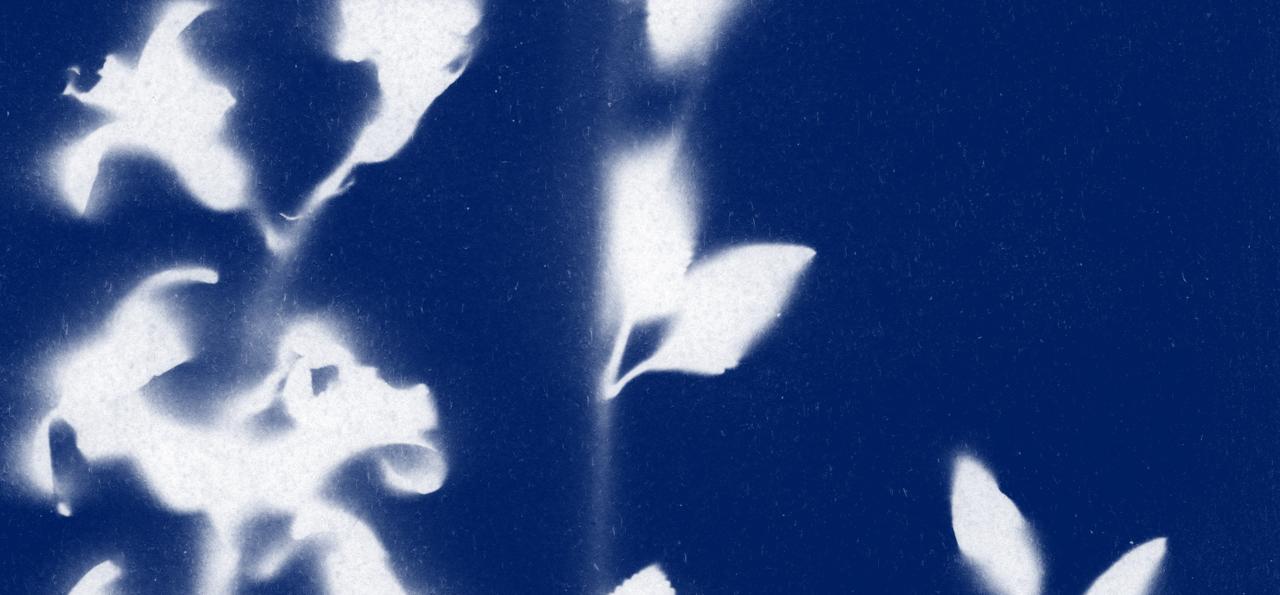
CHAPTER THREE: TAKE-AWAYS
Summary
QUESTIONS TO ASK MILLS ABOUT THEIR INDIGO DYEING PROCESS
Using the results of our research study, Transformers Foundation has compiled a list of questions decision makers should ask when sourcing denim and evaluating sustainability claims.
IF A COMPANY CLAIMS TO BE SAVING MORE WATER THAN THE TRANSFORMERS STANDARD FOR INDIGO DYEING, ASK THEM:
• How is the mill reducing water consumption?
• Is the process generating more indigo waste?
• How has that affected the mill’s efficiency?
• Are more chemicals being used in the dyeing process?
• What chemicals are they, and are they certified by any international standards?
• What is the overall impact on process sustainability of these chemicals?
WHEN DESIGNING THE PRODUCT AND SPECIFYING THE DENIM SHADE ASK THE MILL:
• What is the most sustainable way to achieve medium-light tones in garment washing?
• Dark indigo shades require more indigo dye and more water consumption, so what if we started with a mid-level shade and lightened it from there?
• How much less water and chemicals would be used?
OTHER QUESTIONS TO ASK:
• How is the company monitoring production and efficiency: by hand or with automatic devices and software?
• What equipment are they using?
• What is the pretreatment process?
• How many boxes are used for the specific color?
• What type of dye do they use?
• What are the washing-off conditions?
• Do they clean, recycle or reuse their water?
• How much freshwater is used in their processing in percentage vs recycled water?
• Does the mill share their circular and sustainable practices with their customers?
• Does sustainability figure into the decision-making process when buying machinery?
• What is the dyeing efficiency calculated as ratio between fed indigo and wasted indigo in washing boxes during the specific process?
• Does the mill make lab tests to check the actual indigo on the yarn and what is the real dyeing efficiency?
CON CLUSION
CONCLUSION

CONCLUSION
The Indigo Council’s goal was to create a benchmark for water usage during the indigo dye process and we succeeded in that effort. By working with innovative and proactive mills and machinery manufacturers, we also discovered that there are ways to reduce water consumption through close monitoring, legislative pressure, and continued research and development.
It is the Transformers Foundation’s hope that all denim companies — whether they are based in water-rich or water-scarce regions — can learn from the results of our Indigo Study.
Legislative or community pressure to reduce water consumption may never come for a
mill located in a wet country. But denim is an international community and one that has long advocated for the collective good.
All mills can benefit from examining their efficiency and waste and finding ways to be more precise in their processes.
The Transformers Foundation hopes that one day there will be global standards to ensure water is protected as a precious life preserving resource. Until that time, we hope all denim mills will work to meet and exceed the benchmark established by this study.
ACKNOW LEDGEMENTS
This paper builds upon the foundations laid in our previous work, and we are deeply grateful to the many individuals and partners who made this next phase possible.
We extend our sincere thanks to our Steering Committee members, especially Stefano Agazzi (Karl Mayer) and David Emrey (Morrison) , whose guidance and technical contributions were instrumental throughout this study. Stefano’s support on the formulas, calculations, and outcome interpretation was particularly invaluable.
We also gratefully acknowledge Naceur Azraq (DyStar) for his contributions and insights on the chemistry aspects of the work.
Naveena Denim Ltd (NDL)
Rashid Iqbal Nacir and his team — Faisal Yaqub and M. Mazhar Qayyum
We would like to make particular mention and express our sincere gratitude to Rashid Iqbal Nacir and the team at Naveena (NDL) for their moral and financial support as the lead contributor to this report. Their commitment to advancing industry knowledge and supporting educational initiatives is deeply appreciated and serves as a strong example of the denim industry's dedication to collective progress.
Soorty
Raza Ur Rahman (primary contact) and Alper Cataloglu
Crescent Bahuman Limited (CBL)
Suat Özdemir (primary contact) and Naurin Muzaffar
Diamond Denim By Sapphire
Saqib Shahzad
Our sincere appreciation goes to our mill partners, whose time, data, and openness made this research possible:
Orta Anadolu
Ali Çifçi and Ümit Can Kılıç


ACKNOWLEDGEMENTS
Advance Denim
Alice Chan, Mark Ix, and Michael Lam
Candiani Denim
Danielle Argaza (primary contact) and Alberto Candiani (met during the study’s introduction)
We also thank our third-party collaborators at Bluesign: Kutay Sarıtosun and Daniel Rufenacht, for their contributions to validating and contextualizing key findings.
The author of this paper, Alden Wicker , is an award - winning journalist and sustainable fashion expert—founder of EcoCult and author of To Dye For: How Toxic Fashion Is Making Us Sick—and How We Can Fight Back (2024 Rachel Carson Book Award recipient). With bylines in The New York Times, Wired, BBC, and others, Alden brings rigorous investigative depth to the intersection of fashion and environmental health.
We also acknowledge the creative vision of Sadia Rafique , graphic designer of this paper, Art Director at ENDRIME®, renowned for her illustrative and graphic design work in the

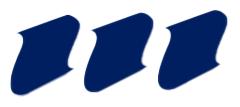
fashion industry and denim educational platform Denim History.
Special thanks to Paolo Leidi , who served as technical fact - checker, ensuring accuracy and detail alignment across all technical content.
Finally, we appreciate the valuable insights provided by our industry experts: Michael Morrell , Sanjeev Bahl (who facilitated an introduction to Hamit Yenici , whose input was also appreciated), and Paul Mailman , whose perspectives we sought during this process.
We're especially grateful to Zennure Danışman , who served as project manager on this paper, ensuring coordination, consistency, and timely execution across all contributors.
We also thank Sue Barrett for her background research and ongoing support throughout the process.
To all who shared their time, expertise, and support—thank you.

AP PENDIX
We asked representatives of each mill to share their thought process around investing in rope or slasher dyeing equipment:
While the mill recognized the traditional benefits and reliability of rope dyeing, they said in the future they will invest in slasher machines to provide flexibility in production and expand the product range. Recent technological advancements have mitigated previous concerns about slasher dyeing.
Slasher dyeing offers a “one-stop process” by combining dyeing and sizing but demonstrates higher warp sheet losses. Rope dyeing minimizes warp sheet loss but requires re-beaming. Rope dyeing also achieves up to three times higher production. Rope dye ranges are better for coarse yarns, while slasher is suitable for finer counts.
This company prefers rope dyeing because of its longer history of use in the denim business. Among the benefits of rope dyeing are its suitability for coarser cotton for heavier fabric, ability to achieve darker shades, and no side-to-center shade variation. Using rope dye ranges means easy access to skilled technicians and higher productivity compared to slasher dyeing. The mill said if they were in the market for a dye machine in the future, they would invest in rope dyeing machines again for the quality and the productivity.
This company uses both rope dye and slasher dye machines. The choice of which to use depends on fabric characteristics and customer requirements. Rope dyeing offers more even shades, better fastness, and brighter colors. Slasher dyeing tends to have lower costs and more color variety, but shades may appear more grayish. Any future investment would depend on specific production needs.
APPENDIX I:
This mill saw advantages to both methods, noting that using both machines allows the company to handle a diverse range of fabric types. For thicker warps, rope dyeing is preferred, while slasher dyeing is better for fine warps. Slasher dyeing saves labor, time, and energy as sizing is integrated.
For this mill, rope dyeing is preferred for high production volumes, but slasher is preferred for fine and delicate yarns. Also, slasher dyeing has an efficiency advantage because they allow for immediate weaving post-dyeing. But the company said if it was purchasing a new machine today, it would likely invest in rope dyeing machines for mass production needs.
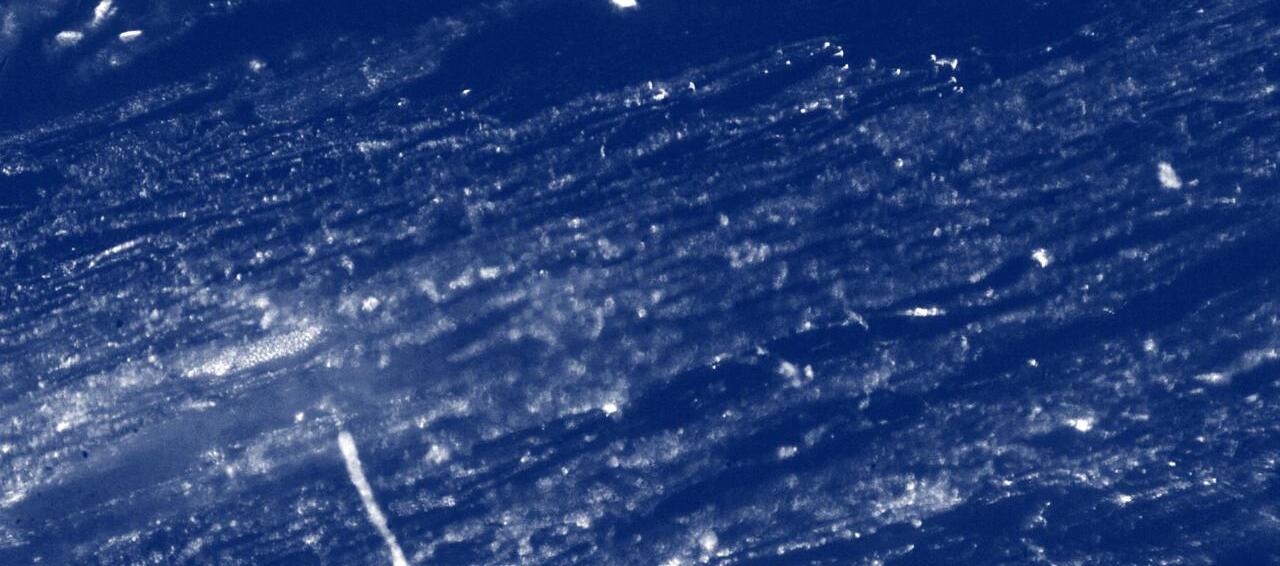
WATER & INDIGO RECYCLING
Even though it is not the scope of this study, water recycling is practiced by most mills. All mills in this study have said that they do not throw out their indigo and simply extract that indigo from the rinsing boxes and reintroduce it to the next batch of dyeing. Indigo dyeing facilities are getting smarter about recycling water by setting up systems that clean and reuse water from rinse and washing stages.
DYING WITH LESS WATER AND WATERLESS DYEING
Some innovators in the industry are getting creative with dyeing techniques such as “foam dyeing” or “air dyeing.” Air dyeing, also known as air-assisted dyeing, utilizes a combination of air and dye mist to color the fabric. In this process, the fabric is suspended in a chamber where a fine mist of indigo dye is sprayed onto its surface. The fabric is then exposed to circulating air, which helps the dye penetrate the fibers and fix onto the fabric. Air dyeing minimizes water usage by eliminating the need for large dye baths and extensive rinsing stages.
Nevertheless, traditional indigo dyeing still dominates the industry as the number one dyeing system. A future study could examine whether these innovations could replace the current system of wet processing.
FINISHING PROCESSES
The aim of this study was to create a reference number for indigo dyeing of warp yarns only. But the subsequent processes, such as desizing and finishing, are no less important. A future study could also work through these stages to create benchmarks for them.
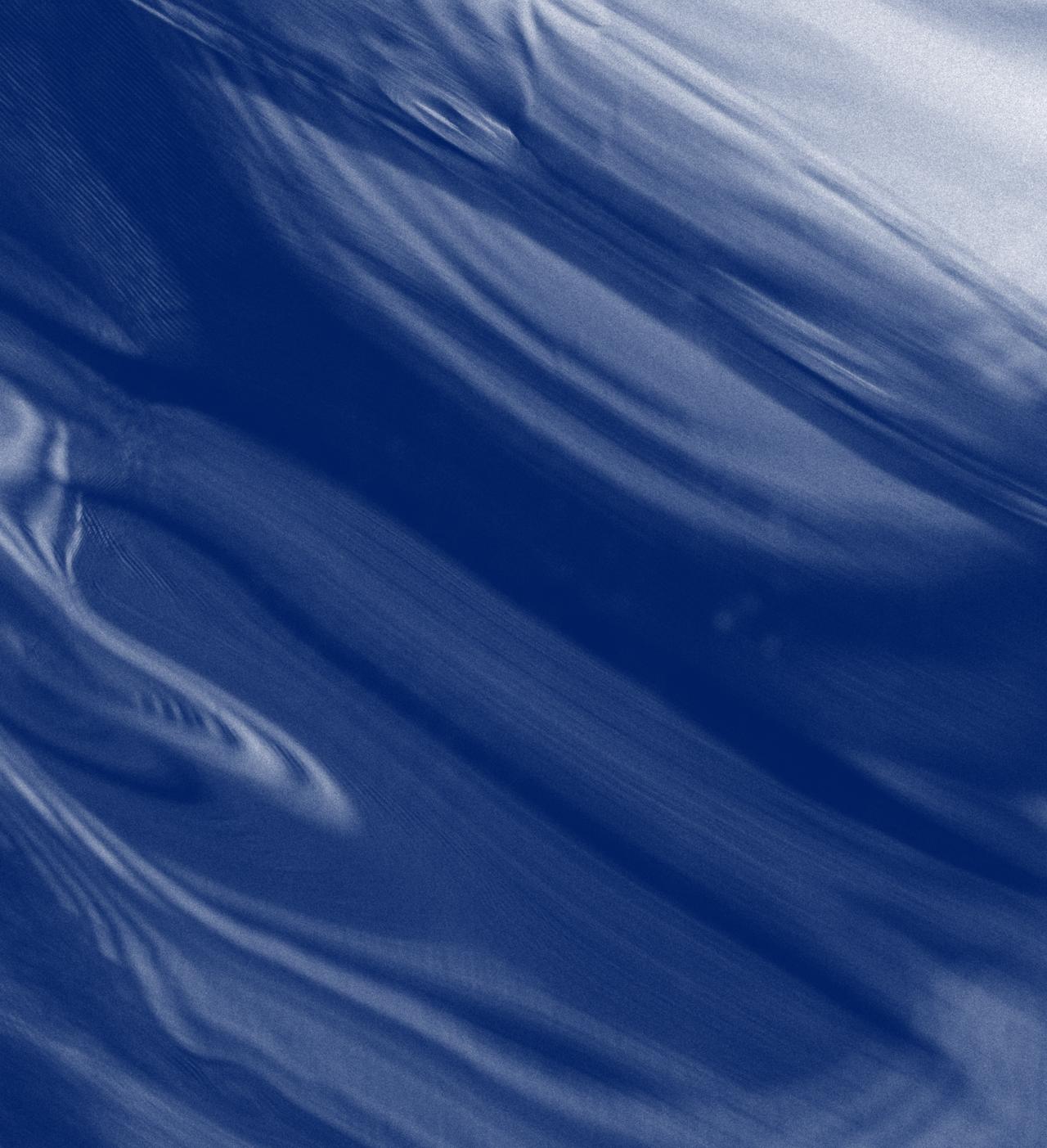
END NOTES
https://sciencebasedtargetsnetwork.org/wp-content/uploads/ Corporate-water-stewardship-and-science-based-targets.pdf
https://www.newclothmarketonline.com/databankandreports/ list-of-top-denim-mills-worldwide/
https://www.euronews.com/2024/01/17/meps-adoptnew-law-banning-greenwashing-and-misleading-productinformation#:~:text=The%20European%20Parliament%20 approved%20a,on%20products%20and%20improve%20labelling.\
https://sourcingjournal.com/sustainability/sustainabilitycompliance/nike-greenwashing-lawsuit-hm-consciouscollection-recycled-polyester-plastic-bottle-435513/
https://sourcingjournal.com/sustainability/sustainability-news/ lululemon-athletica-class-action-greenwashing-florida-beplanet-518651/
https://www.pbs.org/newshour/science/blue-jeans-6000-yearold-peruvian-ancestor
https://www.nationalgeographic.com/environment/article/bluejeans-indigo-indican-enzyme
https://www.nist.gov/news-events/news/2017/09/new-methodidentifying-carbon-compounds-derived-fossil-fuels
https://kingpinsshow.com/is-natural-plant-based-indigo-dyemore-sustainable-than-synthetic-indigo/
https://kingpinsshow.com/is-natural-plant-based-indigo-dyemore-sustainable-than-synthetic-indigo/
Meksi & Mhenni, 2015 https://www.sciencedirect.com/science/ article/abs/pii/B9780857098436000044?via%3Dihub
Page 20-21 Rope Dye & Slasher Dye Illustrations by Matt Duckett
Page 5, 6, 7, 8, 10, 11, 18, 19, 23, 26, 27, 37, 42, 46, 53 by Sadia Rafique Page 41, 49, 50 and 56 images from Death To Stock
You may not copy, reproduce or republish any of this report, without prior written permission of Transformers Foundation.
If you wish to make use of any material contained within please contact Transformers Foundation at: hello@transformersfoundation.org
Transformers Foundation 833 Broadway, 5th Floor NYC NY 10003
© Transformers Foundation 2025 All Rights Reserved
TransformersFoundation.org
